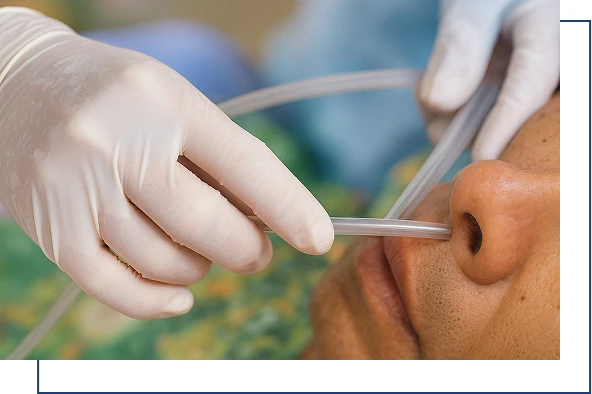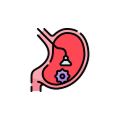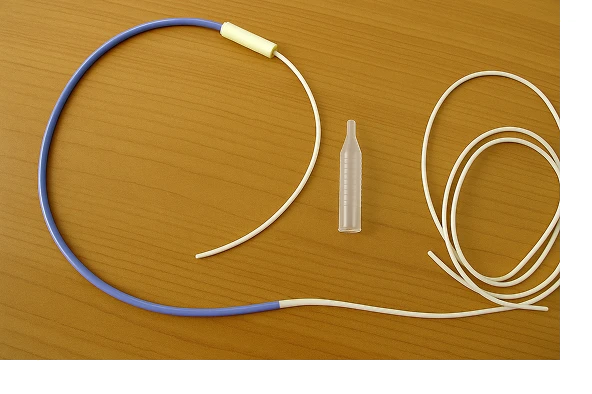Overview
An endoscopy-guided nasojejunal (NJ) tube placement is a medical procedure to insert a feeding tube into the jejunum (part of the small intestine) through the nose. To ensure accurate positioning, the tube is placed using an endoscope, a thin, flexible tube with a camera. This method is used when patients cannot eat or digest food normally due to various medical conditions.
Facing nutritional challenges due to digestive issues? Dr. Debjoy Sau offers safe, endoscopy-guided NJ tube placement to help you get the nutrition your body needs—comfortably and effectively.

Endoscopy-guided NJ is Advised For
People who cannot process food in their stomachs and need intense care
Patients with severe vomiting or gastroparesis
Those with high aspiration risk
Critically ill patients who need post-pyloric feeding
Individuals with blocked or non-functioning stomach
Patients who did not respond well to nasogastric (NG) feeding
Purpose
Deliver nutrition, food and medicines directly to the small intestine
Avoid the stomach for safer feeding
Prevent aspiration pneumonia in high-risk patients
Provide temporary nutritional support during recovery from illness or surgery
How Does It Work?
You may need to fast for 6–8 hours before the procedure.
Local anaesthesia or mild sedation will be given for comfort.

The doctor will pass an endoscope through the mouth into the stomach and beyond to the jejunum.

The NJ tube is placed under direct vision.

Once positioned, the endoscope is removed, and the tube is secured.
After the doctor confirms tube placement, the feeding will begin shortly after.
Looking for a trusted specialist in Kolkata? Schedule your appointment with Dr. Debjoy Sau now.
Advantages of Endoscopy-guided Placement
Compared to blind or radiologic insertion methods, endoscopy-guided NJ placement offers:
Greater accuracy in tube positioning
Reduced risk of misplacement into the airway or stomach
Immediate confirmation of proper tube location
Better outcomes for patients who need long-term or critical nutritional support
Minimally invasive approach with real-time visual guidance

Book An Appointment
FAQs
Know Your Answers
Does endoscopy-guided NJ tube placement cause pain?
No. Local anaesthesia or sedation is used. Mild throat discomfort may occur after the procedure.
How long can the NJ tube stay in place?
It can stay for several weeks, depending on the patient’s condition. The doctor will advise on when it should be changed or removed.
Does NJ-tube placement require hospital admission?
It may be done as an inpatient or outpatient procedure, depending on the patient’s condition.
Can patients move around with an NJ tube?
Yes, patients can usually move around, sit or walk with an NJ tube in place. However, they should avoid pulling or twisting the tube to prevent dislodgement.
Can I eat or drink with an NJ tube?
Most patients with an NJ tube receive all nutrition through the tube. In some cases, small sips of water may be allowed, depending on the condition and doctor’s advice.

